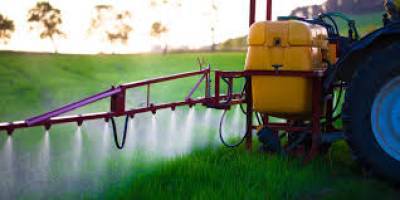NEW DELHI, 1 September 2024: Pesticides play a crucial role in modern agriculture by controlling pests and diseases that threaten crop yields and food security.
However, their use raises significant concerns regarding public health and environmental sustainability. Improper or excessive application of pesticides can lead to health risks, environmental contamination, and the development of pesticide-resistant pests.
Effective management of pesticide use is essential to balance agricultural productivity with protection for human health and the environment. This article explores strategies for managing pesticide use responsibly and minimizing its negative impacts.
The Risks of Pesticide Use
- Health Risks to Humans
- Acute Poisoning: Direct exposure to high levels of pesticides, through inhalation, ingestion, or skin contact, can cause acute poisoning. Symptoms may include nausea, dizziness, headaches, and in severe cases, respiratory distress or neurological effects.
- Chronic Health Effects: Long-term exposure to certain pesticides has been linked to chronic health issues such as cancer, reproductive disorders, endocrine disruption, and developmental problems. Farmers, agricultural workers, and communities living near agricultural areas are particularly at risk.
- Residue in Food: Pesticide residues can remain on food products, potentially affecting consumers’ health. Regulatory agencies set maximum residue limits (MRLs) to ensure that pesticide levels in food are within safe limits, but exceeding these limits can pose health risks.
- Environmental Contamination
- Soil Health: Pesticides can alter soil microbial communities and degrade soil health. Persistent chemicals may affect soil fertility and disrupt the natural ecosystem.
- Water Pollution: Pesticides can runoff into waterways, leading to contamination of rivers, lakes, and groundwater. This pollution can harm aquatic life, disrupt ecosystems, and affect water quality for human consumption.
- Biodiversity Loss: The use of pesticides can negatively impact non-target species, including beneficial insects, birds, and plants. This loss of biodiversity can disrupt ecological balance and reduce ecosystem services.
- Development of Pesticide-Resistant Pests
- Resistance Development: Overuse or misuse of pesticides can lead to the development of resistant pest populations. Resistant pests are harder to control and may require higher doses or new pesticides, leading to a cycle of increased chemical use.
- Reduced Efficacy: As resistance develops, the effectiveness of pesticides diminishes, making pest control more challenging and costly for farmers.
Strategies for Managing Pesticide Use
- Integrated Pest Management (IPM)
- IPM Principles: Integrated Pest Management combines multiple pest control strategies to minimize reliance on chemical pesticides. It includes practices such as biological control, habitat management, and cultural practices to manage pests sustainably.
- Monitoring and Forecasting: Regular monitoring of pest populations and environmental conditions helps predict pest outbreaks and tailor control measures. Forecasting tools can provide early warnings and guide timely interventions.
- Threshold Levels: Establishing economic threshold levels helps determine when pest control measures are necessary. This approach ensures that pesticides are used only when pest populations exceed levels that could cause significant economic damage.
- Use of Low-Risk Pesticides
- Biopesticides: Biopesticides are derived from natural sources, such as microorganisms, plants, or minerals. They often have lower environmental and health risks compared to synthetic chemicals. Examples include neem oil, Bacillus thuringiensis, and insecticidal soaps.
- Selective Pesticides: Selective pesticides target specific pests while minimizing harm to non-target species. Using selective pesticides can reduce the impact on beneficial insects and the broader ecosystem.
- Adopting Best Practices for Pesticide Application
- Calibration of Equipment: Proper calibration of pesticide application equipment ensures accurate and efficient delivery of chemicals. This helps minimize over-application and reduces waste.
- Application Timing: Applying pesticides at the optimal time, based on pest life cycles and environmental conditions, can improve effectiveness and reduce the risk of resistance development.
- Protective Measures: Using personal protective equipment (PPE) and following safety guidelines can reduce exposure risks for farmers and agricultural workers. Proper handling, storage, and disposal of pesticides are also essential.
- Promoting Organic and Sustainable Farming
- Organic Farming: Organic farming practices limit the use of synthetic pesticides and rely on natural pest control methods. Organic certification standards often include guidelines for pest management, soil health, and environmental protection.
- Sustainable Practices: Adopting sustainable farming practices, such as crop rotation, cover cropping, and reduced tillage, can improve soil health, enhance biodiversity, and reduce the need for chemical inputs.
- Education and Training
- Farmer Education: Providing farmers with education and training on pesticide management, IPM, and alternative control methods can improve their ability to manage pests effectively and safely.
- Public Awareness: Raising public awareness about pesticide use, food safety, and environmental impacts can encourage consumers to make informed choices and support sustainable agriculture practices.
- Regulation and Policy
- Stronger Regulations: Implementing and enforcing regulations on pesticide use, including restrictions on harmful chemicals and guidelines for safe application, can help protect public health and the environment.
- Support for Research: Supporting research on alternative pest control methods, pesticide formulations, and resistance management can lead to innovative solutions and improved practices.
- Collaboration and Partnerships
- Industry Collaboration: Collaboration between pesticide manufacturers, farmers, researchers, and policymakers can facilitate the development and adoption of safer and more effective pest management practices.
- International Cooperation: Sharing knowledge and best practices across borders can enhance global efforts to manage pesticide use and address common challenges.
Case Studies and Success Stories
- The Integrated Pest Management Program in California
California’s Integrated Pest Management (IPM) program has successfully reduced pesticide use by promoting alternative pest control methods, such as biological control and habitat manipulation. The program has improved pest management outcomes while minimizing environmental and health risks.
- The Organic Cotton Initiative in India
The Organic Cotton Initiative in India promotes organic cotton farming by providing training and support to farmers. By reducing reliance on synthetic pesticides and using organic pest control methods, the initiative has improved soil health, reduced pesticide residues, and increased market access for farmers.
- The Pesticide Resistance Management Program in Australia
Australia’s Pesticide Resistance Management Program focuses on managing pesticide resistance through integrated approaches, including rotation of chemical classes, use of non-chemical control methods, and monitoring for resistance. The program has helped maintain the efficacy of pesticides and manage resistant pest populations.
- The Bio-intensive Integrated Pest Management Project in Kenya
The Bio-intensive Integrated Pest Management (BIPM) project in Kenya promotes sustainable pest control practices through the use of biopesticides, crop rotation, and companion planting. The project has reduced pesticide use, improved soil health, and enhanced food security for smallholder farmers.
Effective management of pesticide use is essential for protecting public health, preserving the environment, and ensuring sustainable agricultural practices.
By adopting strategies such as Integrated Pest Management, using low-risk pesticides, following best application practices, promoting organic and sustainable farming, and investing in education and research, it is possible to balance the benefits of pesticide use with the need for safety and sustainability. Collaborative efforts involving farmers, industry stakeholders, policymakers, and researchers are crucial for advancing responsible pesticide management and achieving long-term agricultural and environmental goals.
Image credit: niehs.nih.gov























